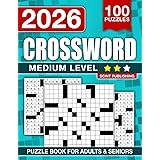The vast and diverse world of video game controllers is constantly evolving, with designs ranging from ergonomically enhanced giants to remarkably compact miniatures. In a recent segment, viewers were treated to a unique review session featuring basketball legend Shaquille O’Neal and IGN’s Brian Altano, where various gaming peripherals were critiqued for comfort, design, and overall player experience. This engaging discussion highlighted some iconic and unusual video game controllers, offering insights into what makes a great gaming companion.
The journey through different gaming controllers, as observed in the video, illustrates the rich history and ongoing innovation within the video game hardware industry. From the early days of bulky console peripherals to the sleek, sophisticated devices of today, controller design has been significantly influenced by technological advancements, ergonomic considerations, and changing player preferences. Understanding these developments provides a deeper appreciation for the tools that connect us to our favorite virtual worlds.
Exploring Classic and Contemporary Video Game Controllers
A deep dive into the specific controllers reviewed by Shaq reveals a fascinating cross-section of gaming history and design philosophy. Each peripheral, with its distinct characteristics, contributes to the broader narrative of how games are played and experienced. These devices, ranging from full-sized console units to tiny handheld marvels, demonstrate the incredible breadth of gaming peripherals available to players.
-
The Xbox Duke: A Legacy of Ergonomics for Larger Hands
The review began with the iconic “Duke” controller, a reimagined version of the original Xbox peripheral. This particular Xbox controller is notably recognized as one of the largest ever released on the consumer market. Its substantial size was initially polarizing but found favor among players with bigger hands, who often struggle with more compact designs. The Duke controller was given an impressive rating of nine out of ten by Shaq, indicating its strong appeal for those who appreciate a more substantial grip.
Consideration of its design reveals a focus on robust construction and ample spacing for buttons and triggers. Imagine if every controller felt tailored to your specific hand size; the Duke aimed for that experience for a particular segment of players. Modern iterations often include digital read-outs or screens, a feature that was positively noted for adding a layer of contemporary functionality to this classic form factor.
-
Niche Designs and Collectibles: The Wu-Tang Controller
Moving on, the discussion included the Wu-Tang controller for PlayStation, a prime example of a niche, collectible console controller where aesthetic design arguably took precedence over pure ergonomics. Shaped like the distinctive Wu-Tang logo, this peripheral was candidly described as one of the most uncomfortable controllers ever produced. Despite its ergonomic shortcomings, its unique cultural connection earned it a seven out of ten rating, likely driven by nostalgia and respect for the iconic hip-hop group.
Such specialized controllers are often considered more as collector’s items or novelty pieces rather than daily gaming tools. They highlight a fascinating aspect of the gaming hardware market, where artistic expression or brand affiliation can sometimes override practical playability. The balance between visual appeal and player comfort is continuously debated in the design community.
-
Mainstream Marvels: The PlayStation 4 Controller
The PlayStation 4 controller, a ubiquitous and widely acclaimed device, was also reviewed. This controller’s design has been refined through multiple generations, achieving a comfortable and familiar feel for millions of players. Initially, it received an eight out of ten, acknowledging its status as a “classic” and its general suitability for a broad range of hand sizes, even for someone with Shaq’s stature.
However, points were subsequently deducted due to the absence of a digital read-out, a feature sometimes present in newer or specialized peripherals. This adjustment to a seven out of ten rating underscores the increasing expectation for integrated technology and secondary display functionalities in modern video game controllers. Even established designs are now being re-evaluated against emerging technological trends.
-
The Modular Future: Nintendo Switch Joy-Cons
The Nintendo Switch Joy-Cons represent a significant departure in controller design, emphasizing modularity and versatility. These small, detachable controllers can be used in various configurations, including being held individually, attached to the console, or paired with a grip. The right Joy-Con, specifically, was presented and rated a five out of ten, with the admission that it is generally considered the lesser of the two in terms of standalone comfort.
The modular nature of the Joy-Cons was a game-changer for handheld gaming, allowing for flexible gameplay scenarios and local multiplayer on the go. While their compact size is essential for portability, it can sometimes compromise ergonomic comfort during extended play sessions, especially for adult players. This trade-off between portability and traditional comfort is a recurring theme in modern gaming peripherals.
-
Handheld Horizons: The Game Boy Micro
Further exploring the realm of miniaturization, the Game Boy Micro was introduced. This device was famously the tiniest Game Boy ever produced, designed with a sleek, almost jewelry-like aesthetic. Despite its minuscule proportions, it was appreciated for its beautiful Famicom-inspired design and surprisingly functional shoulder and start buttons, receiving a seven out of ten rating.
The Game Boy Micro exemplifies the era when handheld gaming was pushing the boundaries of portability and design elegance. Its existence questioned how small a gaming device could become while retaining playability. This specific model holds a special place in retro gaming circles for its unique form factor and commitment to miniaturized power.
-
Extreme Miniaturization: The 8BitDo Zero
The discussion concluded with the 8BitDo Zero, billed as one of the world’s tiniest video game controllers. Its incredibly small size proved to be more of a novelty than a practical gaming tool, as evidenced by Shaq’s reluctance to even hold it, leading to a three out of ten rating. Such tiny devices are often considered novelty items or designed for specific, highly portable use cases where extreme compactness is paramount.
The existence of controllers like the 8BitDo Zero demonstrates the experimental edge of controller design. While not intended for serious gameplay, these peripherals push the boundaries of form factor, often serving as fun, highly portable accessories or collector’s curiosities. They remind us that gaming peripherals come in all shapes and sizes, catering to diverse needs and preferences.
-
Beyond the Buttons: The Future of Gaming Peripherals
The conversation naturally progressed to speculative ideas about future gaming controllers, with Shaq proposing an innovative concept: small, wireless “knobs” or electrodes worn on the fingers, allowing for gesture-based control in the air. This imaginative suggestion resonates with historical attempts at immersive control, such as the Power Glove, and hints at the ongoing quest for more intuitive and unencumbered ways to interact with games.
Innovations in controller technology are consistently explored, with advancements in motion controls, haptic feedback, adaptive triggers, and even brain-computer interfaces shaping the next generation of gaming controllers. The drive towards seamless immersion means that the traditional button-and-stick paradigm is continually being challenged, promising exciting developments for the future of gaming peripherals.
Understanding Controller Design: More Than Just Buttons
The evolution of video game controllers is a testament to the dynamic interplay between ergonomics, technological capability, and user experience. What constitutes an effective gaming controller extends far beyond merely having functional buttons; it encompasses a holistic approach to player interaction and comfort during gameplay.
The Importance of Ergonomics and Accessibility
Ergonomics plays a critical role in the design of gaming controllers. A controller that is uncomfortable or poorly fitted to a player’s hands can lead to fatigue, reduced performance, and even repetitive strain injuries during extended gaming sessions. Early controllers often prioritized functionality over comfort, but modern designs increasingly incorporate natural hand positions, textured grips, and carefully placed inputs to enhance the player’s physical comfort.
Accessibility is another crucial aspect of controller design. Controllers must cater to a wide range of hand sizes, physical abilities, and playing styles. The contrast seen between the large Xbox Duke and the tiny Game Boy Micro illustrates the spectrum of solutions developed to address these diverse needs. Customization options, such as swappable components or adaptive accessories, are becoming more prevalent to ensure inclusive gaming experiences for all.
Nostalgia and the Power of Retro Gaming
The discussion around controllers like the Duke, and the mention of Shaq playing Mario in the 80s, highlights the powerful role of nostalgia in gaming culture. Retro-inspired video game controllers and re-releases tap into a sentimental connection for many players, offering a tangible link to cherished childhood memories. These controllers are often celebrated not just for their historical significance but also for the simple, direct gameplay experiences they facilitate.
The enduring appeal of retro gaming ensures that classic controller designs continue to influence contemporary hardware, sometimes through direct re-releases and other times through subtle design cues. This appreciation for the past enriches the present gaming peripheral market, allowing new generations to experience the roots of controller design.
Technological Advancements in Gaming Peripherals
Beyond ergonomic shape, technological advancements have profoundly impacted video game controllers. Features like haptic feedback provide immersive tactile sensations, while adaptive triggers offer variable resistance, enhancing gameplay realism. Digital read-outs, as briefly discussed in the video, are becoming more integrated, providing immediate feedback or supplementary information directly on the device. These innovations continue to push the boundaries of immersion and interactivity.
The journey from rudimentary joysticks to sophisticated, feature-rich video game controllers demonstrates a relentless pursuit of improved player engagement and comfort. Each new generation of gaming hardware builds upon its predecessors, refining existing concepts and introducing novel features that redefine how we play. The future of gaming peripherals promises even more intuitive and immersive ways to connect with our favorite virtual worlds.









